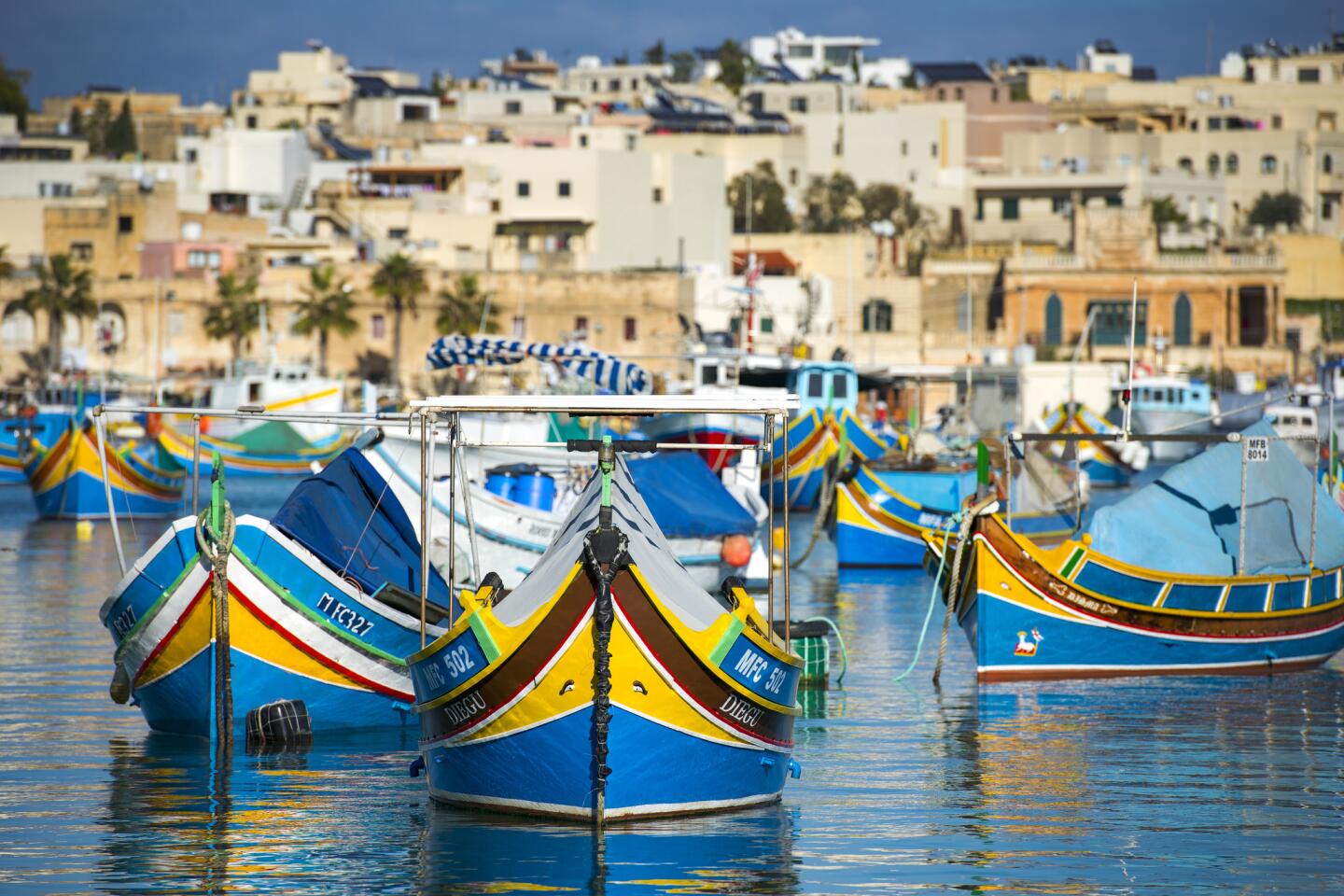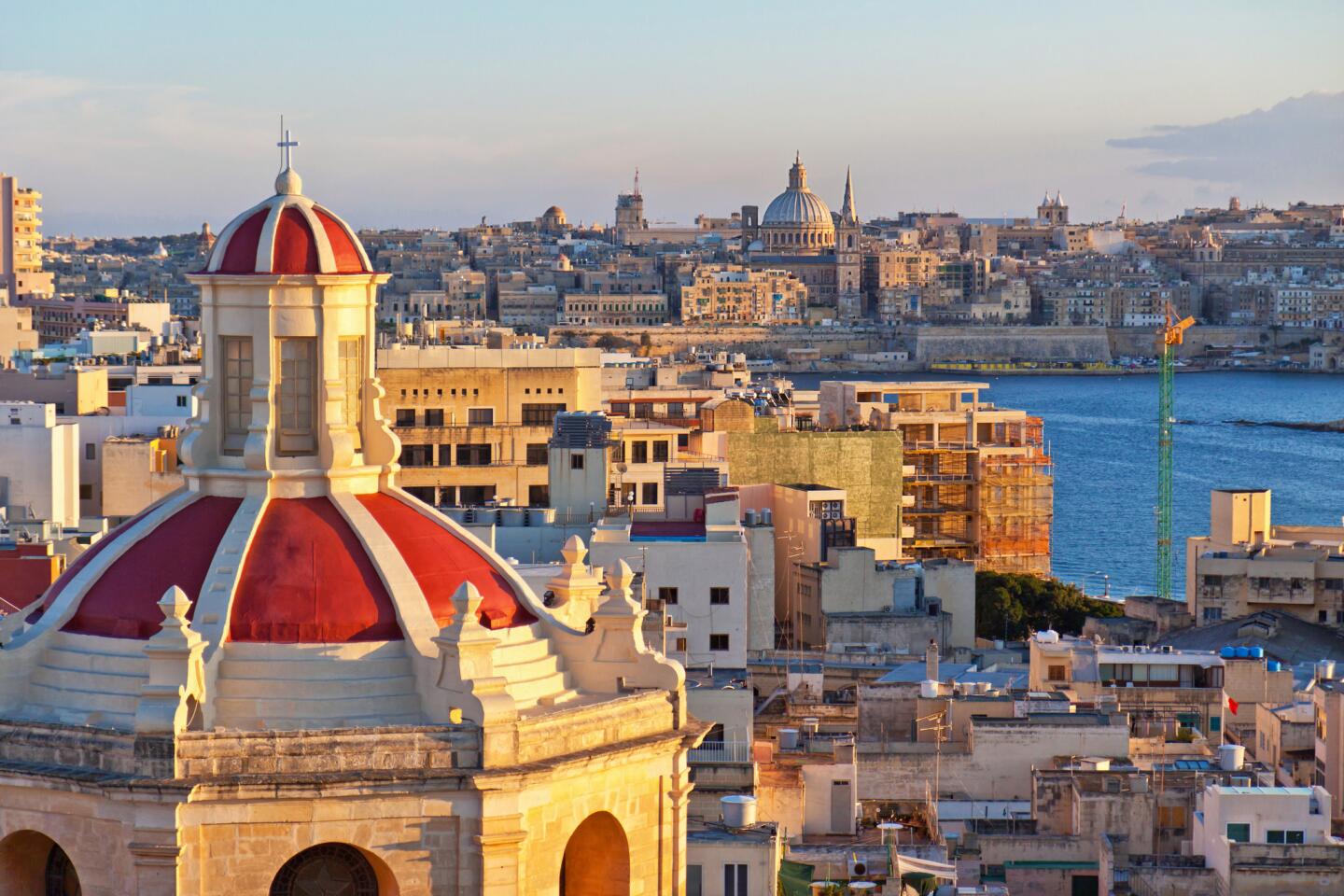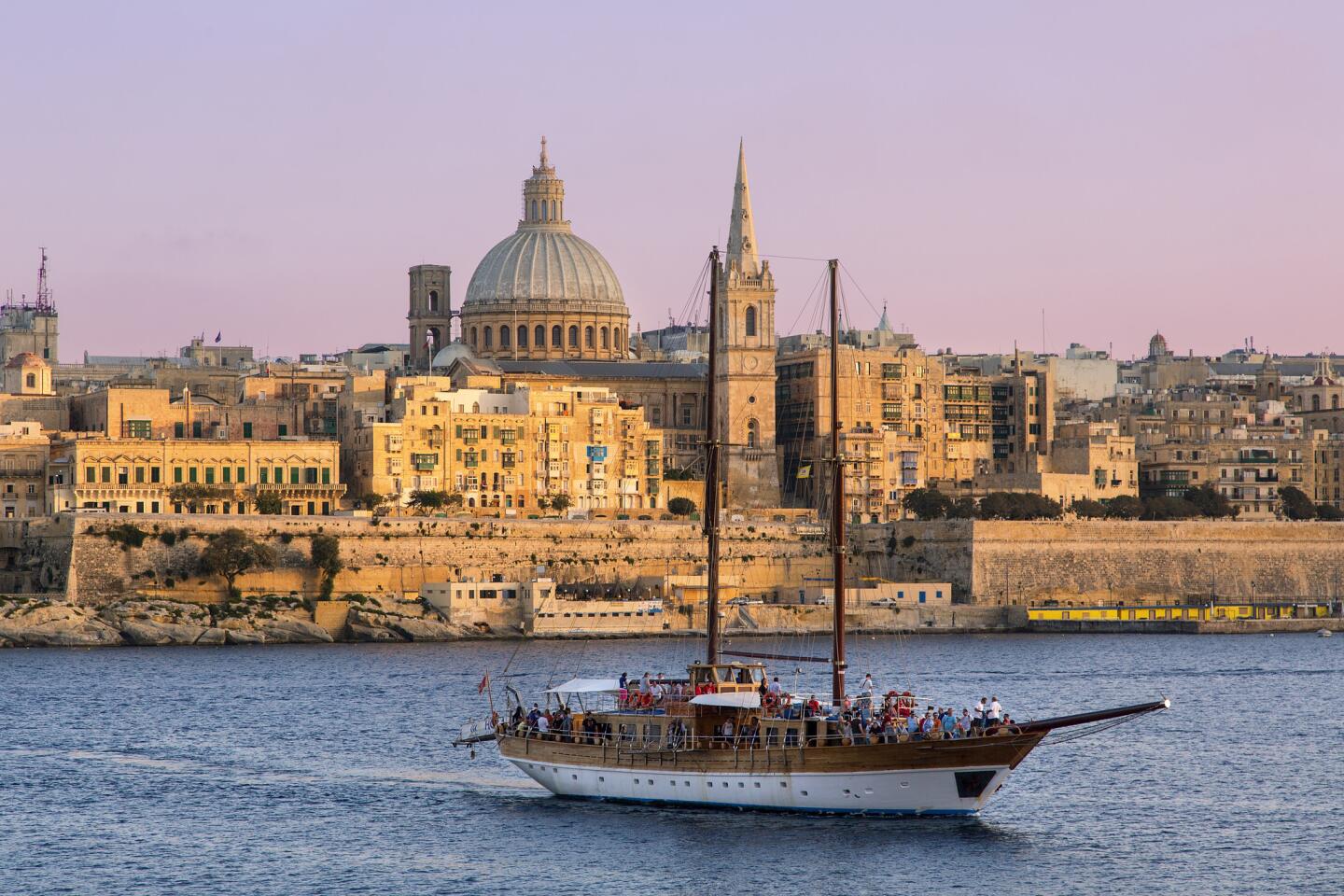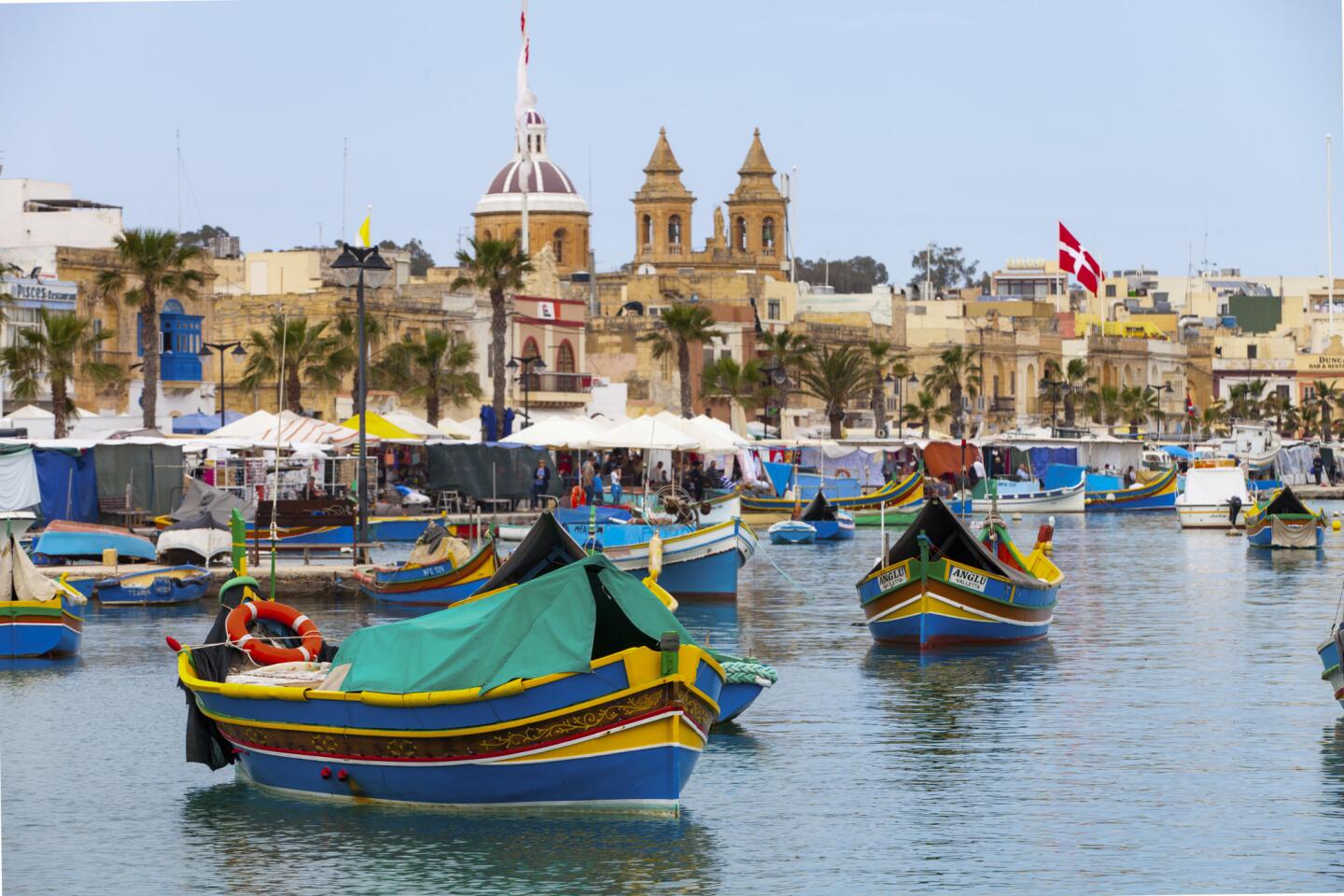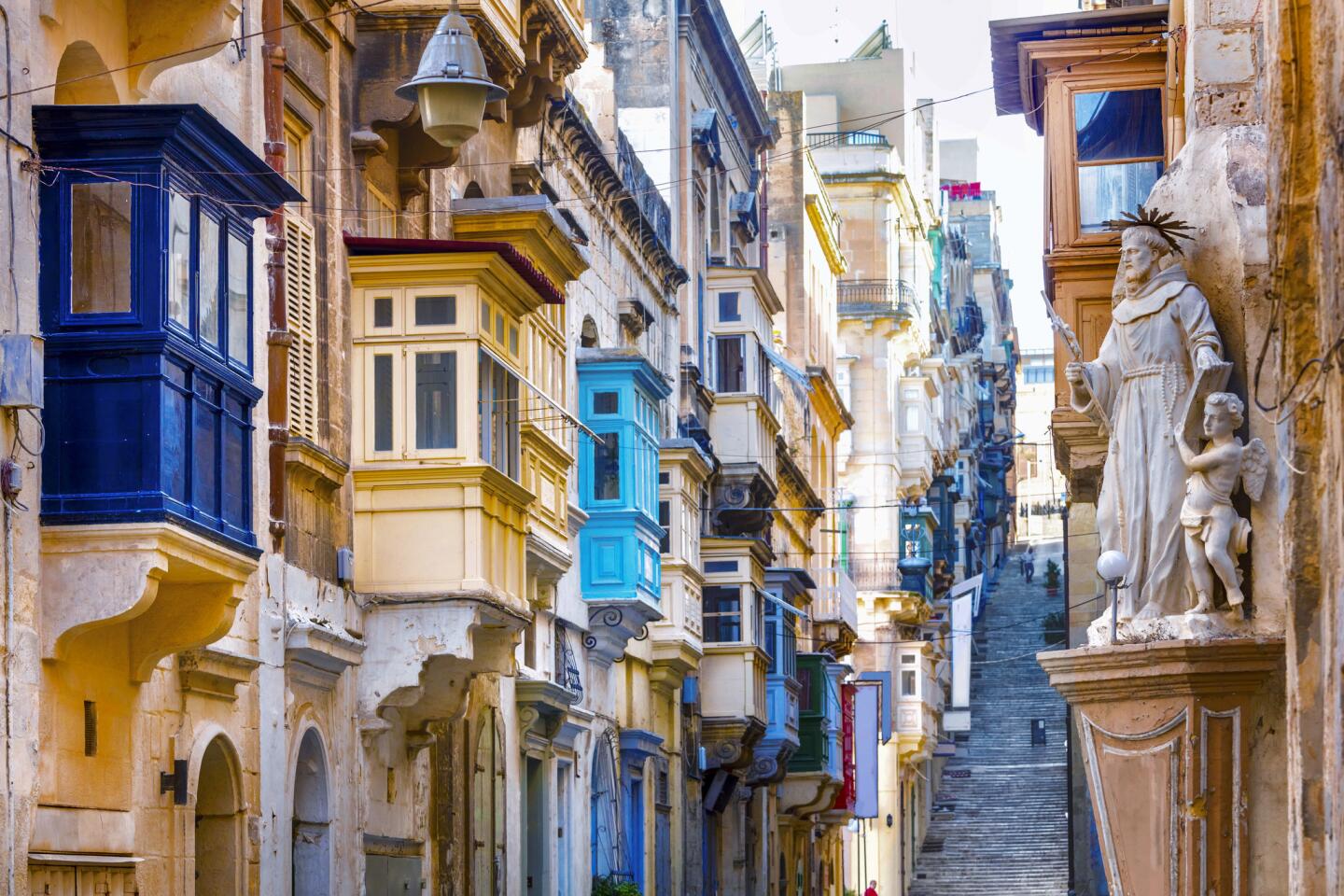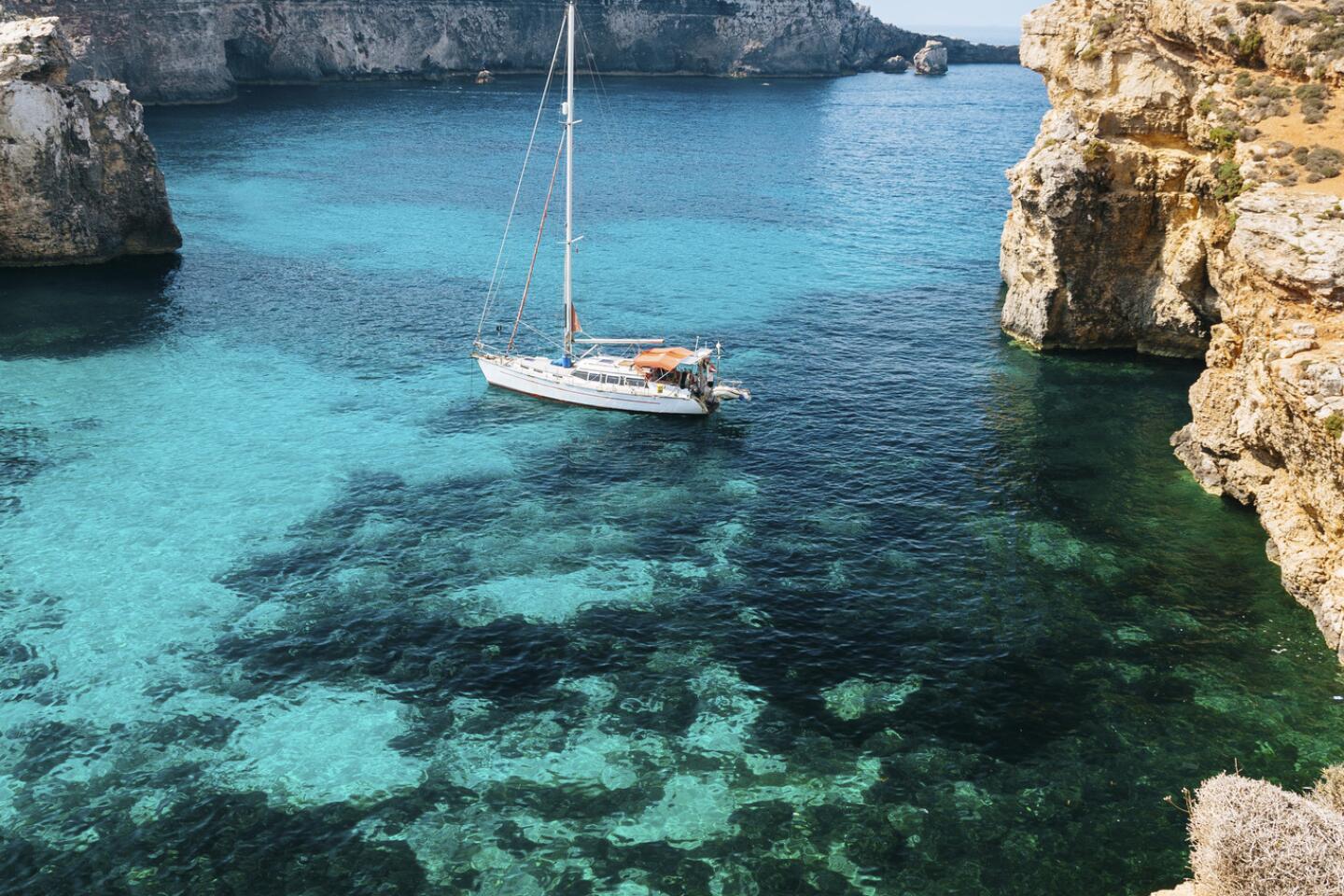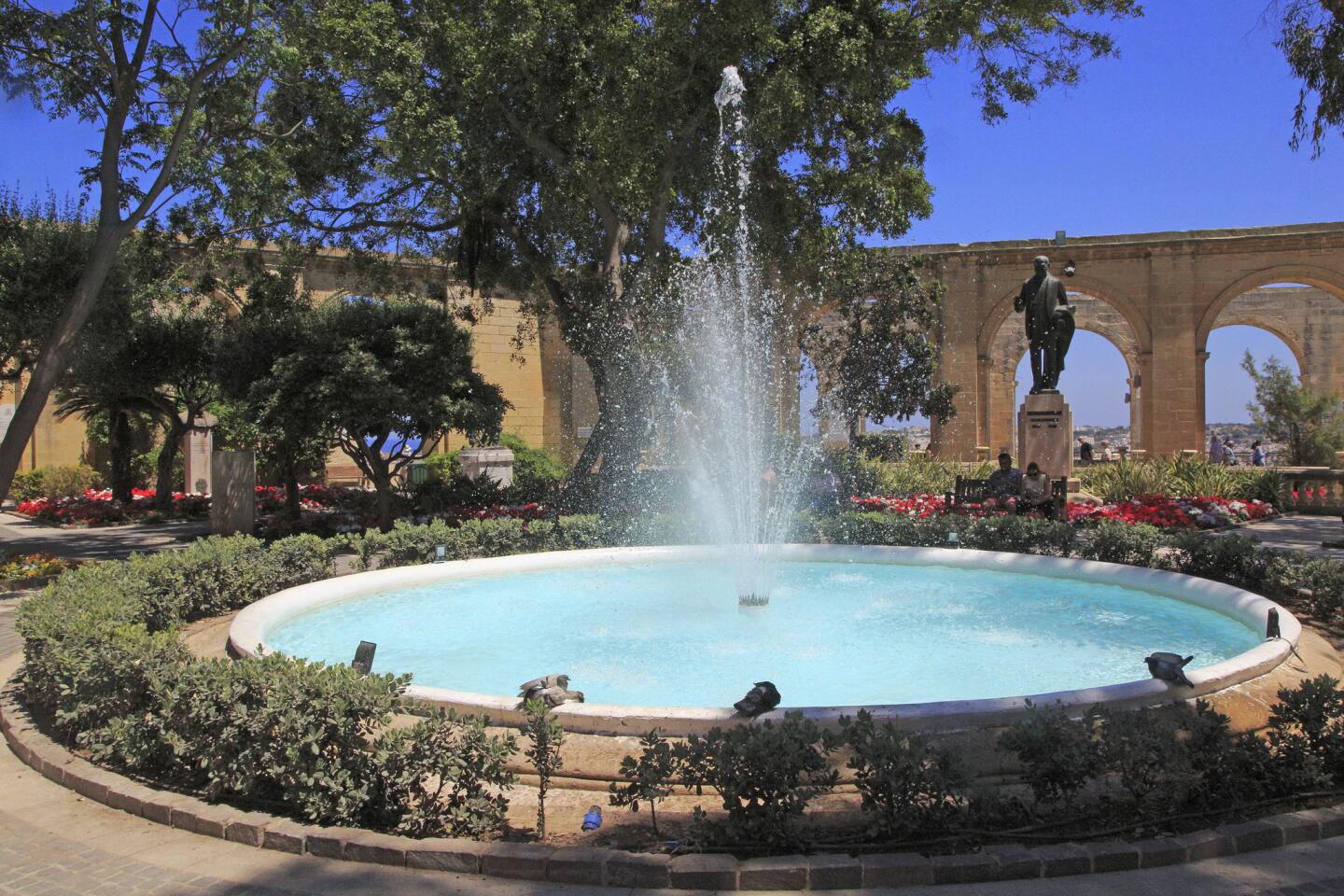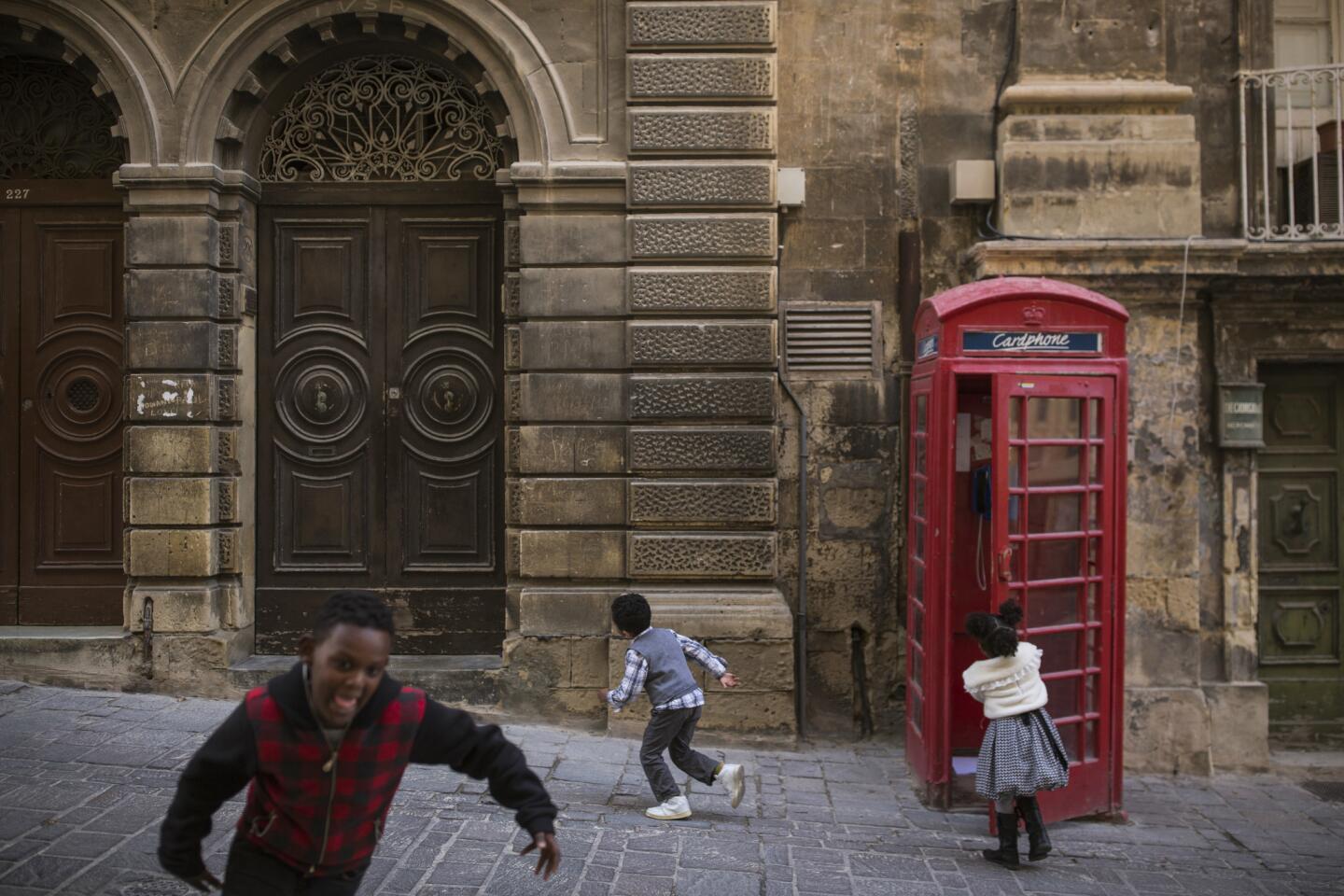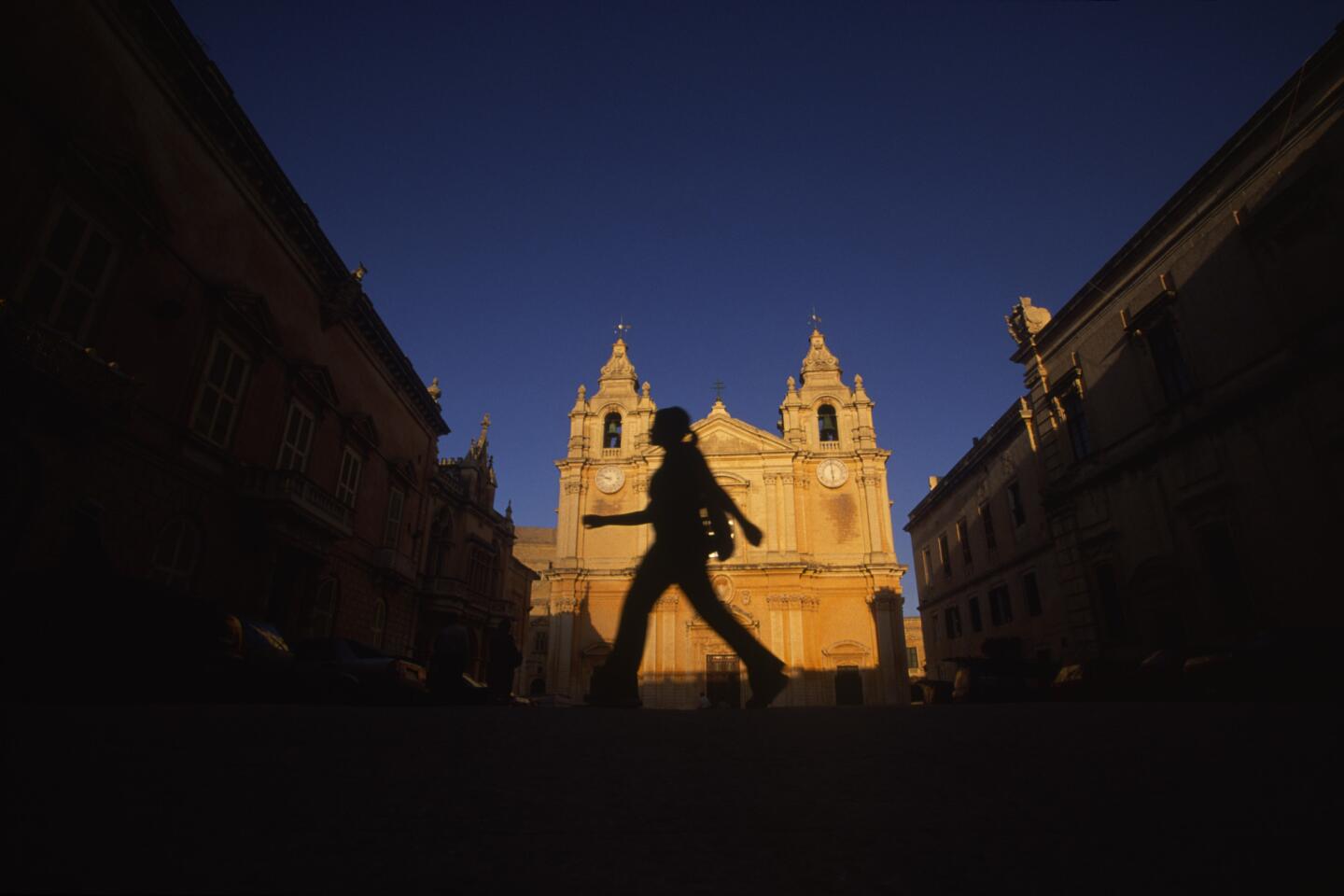Savoring the multiple personalities of Malta
What's the best way to introduce Europe — and European history — to a reluctant traveler who's intimidated by long flights, foreign languages and food that has never known the confines of a sesame seed bun?
Consider a weekend in Malta.
The archipelago nation, in the Mediterranean about 50 nautical miles south of Sicily, offers visitors a chance to contemplate Neolithic culture; experience a mash-up of European and North African food cultures; and explore Instagram-worthy stretches of coastline.
The country is about 120 square miles — about a quarter of the size of the city of Los Angeles — and it’s relatively easy to get around. That’s especially true of Valletta, its capital, which was designed on a grid and has block after block of soft yellow- and ivory-colored buildings.
Many residents speak English as well as Maltese, thanks to a century and a half of British rule, which ended in 1964.

This year Valletta also is an European Union-sanctioned Capital of Culture, which means visitors can experience an expanded range of music, theater, literature, art and dance events.
To reach Malta, it’s a long flight to a major European airport followed by a shorter connecting flight, but once you arrive, you will be in a friendly, historically rich comfort zone.
For centuries, the island nation was overrun by other cultures, including Phoenicians, Greeks, Romans, Arabs, Normans and Spaniards, but now your greatest concern may be all those drivers on the left side of the road, a la Britain.
Sixteenth century city
Malta surfaced as a destination last year while I was planning a trip to Sicily. Its location (a flight from Catania, Sicily, takes about 25 minutes) and relative obscurity were enticing and, eventually, irresistible.
My husband, Steve, and I arrived at the Palazzo Paolina Boutique Hotel in Valletta on a Friday afternoon in late October. Behind its Baroque facade, you’ll encounter an entry with modern light fixtures; gilt; black and white tile; and a sky-blue ceiling. The sleek guestrooms are done up in white, cream and brown.
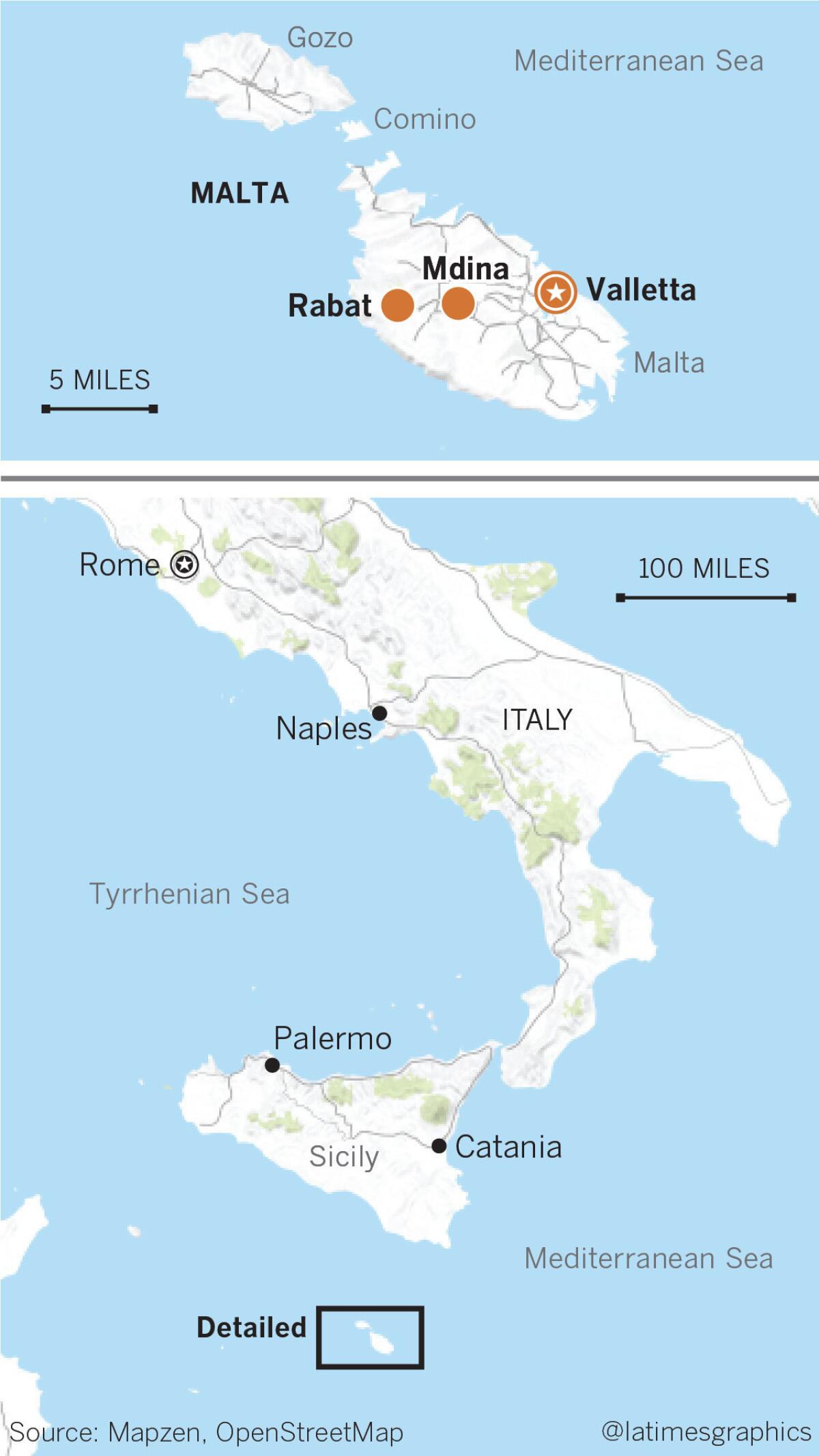
The front-desk staff was friendly and helpful, and the location in the city’s historic center meant that much of what we wanted to see required, at most, a 10-minute walk.
After we deposited our luggage, we walked through the city, eventually making our way to Nenu the Artisan Baker, a well-trafficked restaurant near the hotel.
Its walls were adorned with flat screens showing a endless loop about the bread-making process, a draw for my bread-baking husband who persuaded our waiter to let us hang out in the kitchen for a while.
A cursory look at the dinner menu reminded us that the dishes we were about to order were heavily influenced by Italian traditions but were distinguished by the use of local produce, sausages and cheeses.
Nenu is known for its ftira, a semi-flat bread, and typical Maltese dishes such as pasta, fish and rabbit, or fenek, the national meat. We ordered two ftira with anchovies, tomatoes, capers, fennel seed, onions and potatoes; a savory dish of fried rabbit, crisp outside and tender inside; and pork and beef stew. Somehow we summoned the willpower to inhale almost all of the hearty fare.
The next morning, we set off to tour the historic part of the city, which dates to the 16th century.
The Upper Barrakka Gardens, our first stop, is a public gathering space with a stunning view of the Grand Harbour, the city’s port. It was packed with visitors eager to watch the start of a Rolex-sponsored sailboat race.
We slipped out of the crowd after an hour or so and walked north and west to check out the modern City Gate (the fifth, completed in 2015, in Valletta's history), a nearby Parliament building and open-air theater, all designed by Renzo Piano.
The buildings are noteworthy for the architect and for their striking contrast with the city's Baroque appearance. The gateway is made from two enormous blocks of stone, each topped with a tall steel blade that juts skyward. The Parliament building, which looks like two massive stone blocks resting on columns, is equally stark.
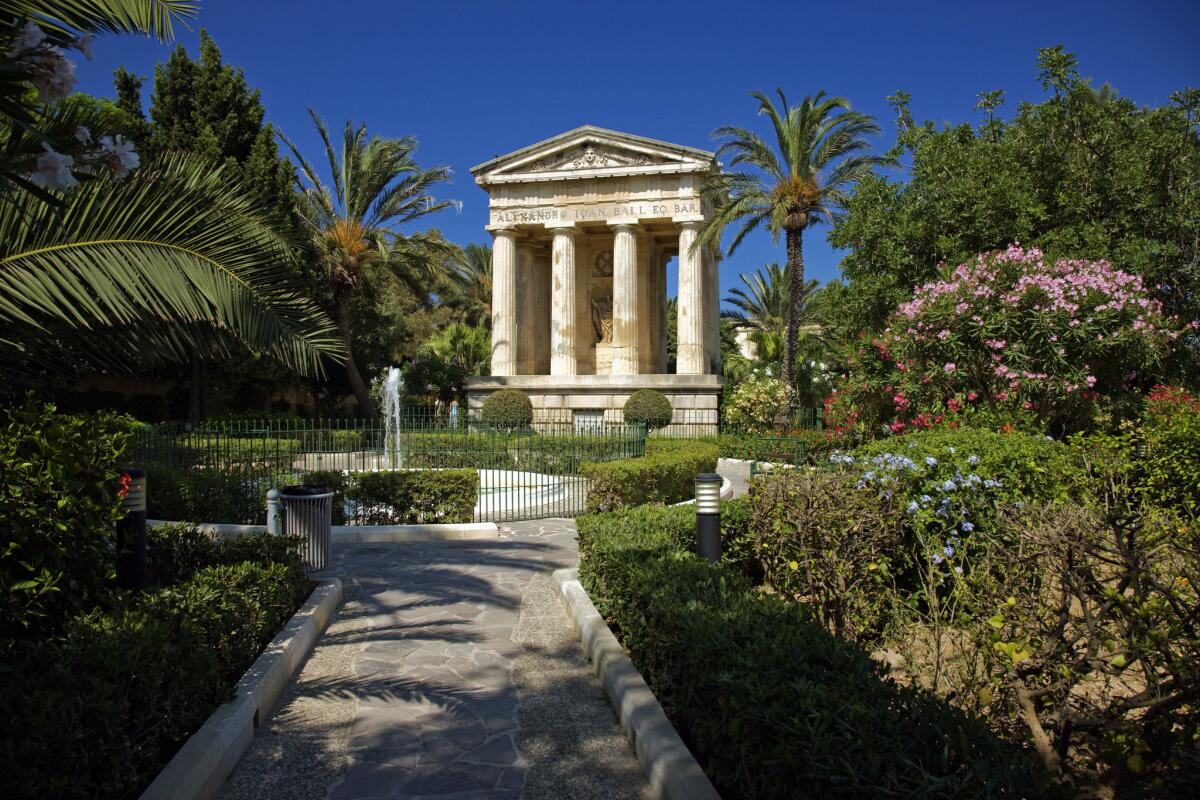
Despite complaints from traditionalists, Piano's works remain on "must-see" lists as was our next destination, St. John's Co-Cathedral, a five-minute walk from the City Gate.
The facade of the cathedral, built in the 16th century for the Knights of St. John, is modest, so we were surprised by the interior, encrusted with marble, gold and carved stone and home to Caravaggio's "The Beheading of St. John the Baptist."
The cafes near the cathedral started to fill for lunch by early afternoon, which made us glad we had reserved a table at Palazzo Preca on Strait Street, once the center of nightlife in Valletta and still a major destination for dining and drinking.
The seafood-intensive menu included Italian and Maltese dishes. The linguine with tiny, briny prawns; the sea bass carpaccio; the Parmesan soup with mushrooms; and a first-rate gnocchi with bits of thin, crunchy asparagus, all ended up on our table. Each dish confirmed our choice of restaurants.
After lunch, Steve returned to the hotel to deal with his food coma while I continued my informal tour of Valletta. I scouted for photo ops at St. George's Square, a huge plaza that attracts sightseers during the day and a younger crowd at night, drawn by nearby bars and restaurants, and the Grand Master's Palace, a rather austere structure that now houses the offices of the president.
I also indulged in some shopping therapy, filling the empty spots in my suitcase with pieces of colorful hand-blown Maltese glass. It’s a popular souvenir and may remind some travelers of glass from Murano, Italy.
Prehistoric mysteries
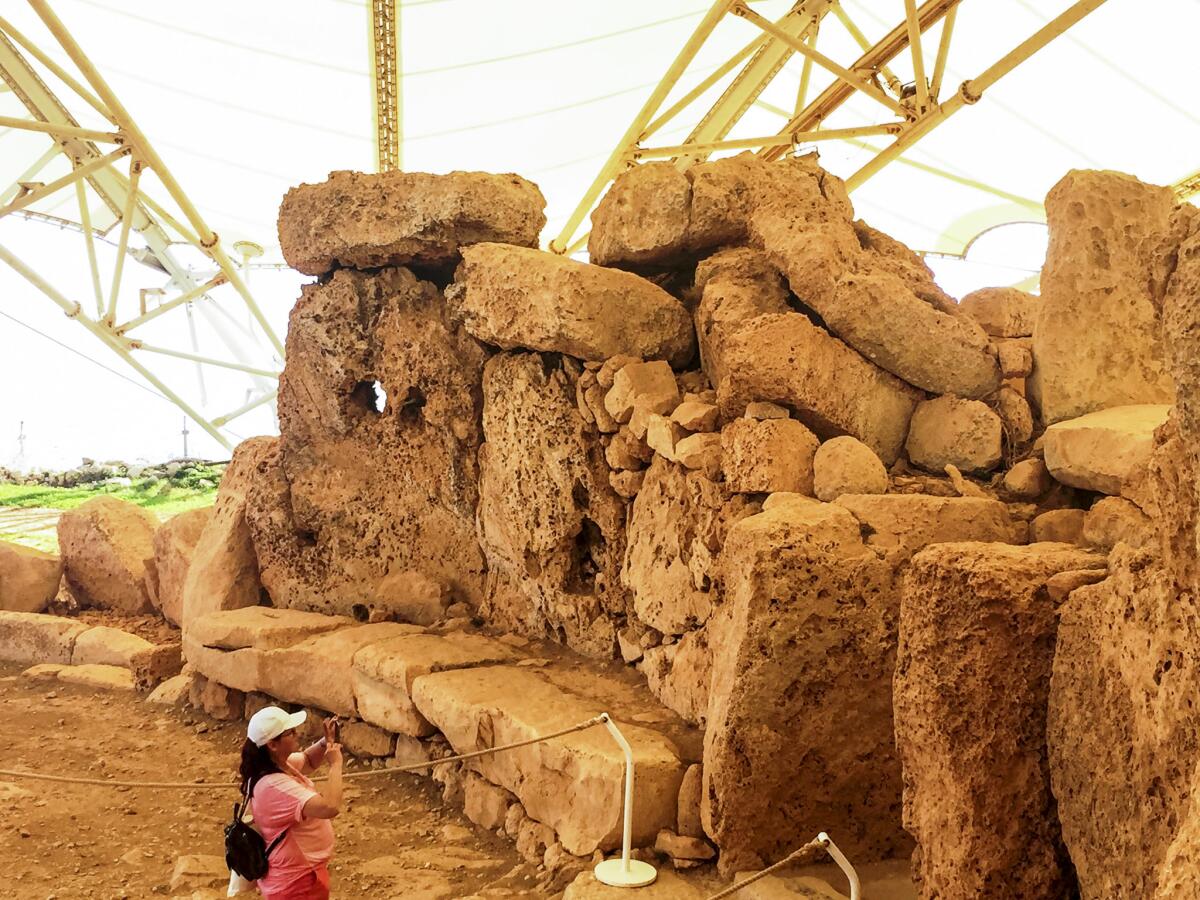
We ventured outside the capital the next day for an eight-hour history lesson, starting with guided walking tours of the contiguous towns of Rabat and Mdina, a 30-minute drive west of Valletta.
The area has been occupied and reoccupied for centuries. Invaders included Arabs, who, experts think, founded Mdina in the early Middle Ages. (Maltese, like Arabic, is a Semitic language.)
At first glance, Rabat and Mdina appear as though they belonged to the medieval and Baroque eras, yet there are remnants of earlier and later civilizations everywhere, including city walls that originated in Roman times and red telephone booths that look as though they were exported from 20th century London.
In Rabat, a quiet town of about 12,000, we stopped at the ornate 17th century Collegiate Church of St. Paul and the Grotto of St. Paul, where he is said to have preached and lived around the year 60. The grotto’s simple stone walls were a startling contrast with the leave-no-surface-undecorated church.
Everywhere we turned, there was something to see, including the brightly painted front doors of private residences and an astonishing variety of door knockers and handles — monsters, lions and sea creatures.
Next we entered Mdina, a fortified village of about 300 (with more notable door hardware) and another series of palaces that are now private homes.
The tiny town and its winding streets and alleys looked like a movie or TV set, which it has been.
Scenes from the first season of "Game of Thrones" were filmed here as well as at other locations in Malta. Mdina is on a list of possible UNESCO World Heritage sites and would join a series of Megalithic temples, which were on our agenda for the afternoon.
We fortified ourselves with a large lunch at Diar il-Bniet, a rustic family-owned restaurant in Dingli, a village about 10 minutes from Mdina.
The restaurant emphasizes seasonal farm-to-table fare, all of it fresh and filling. We made quick work of the pumpkin soup with wild thyme, spaghetti with a flavorful rabbit sauce, and juicy pork chops enhanced by Maltese sausage and onions.
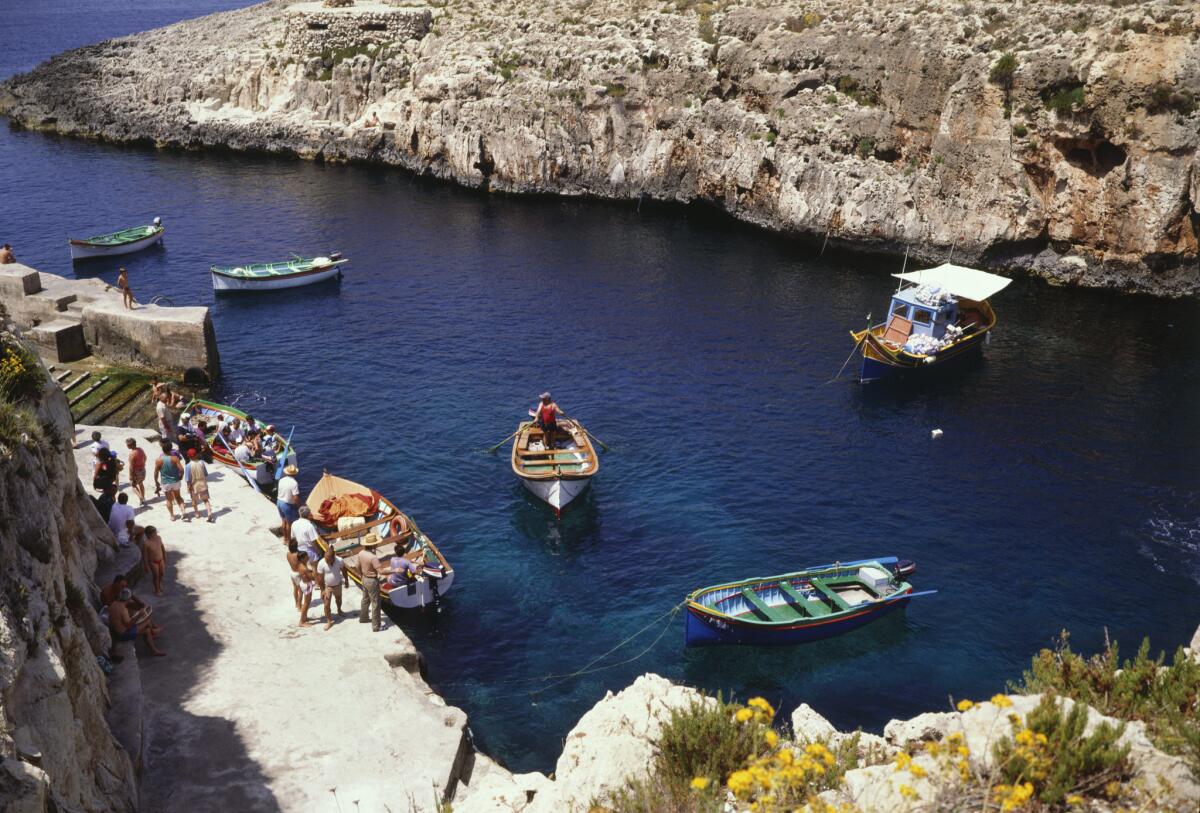
Malta is home to several prehistoric temples. Hagar Qim and Mnajdra, on the southwest coast, are two of the most prominent and beguiling. I understood the draw after one glimpse of the Stonehenge-like slabs of limestone arranged in a series of entryways and rooms.
The enormous rocks, some of which weigh 20 tons or more, glowed in the afternoon light, which made the how-did-they-do-that mystery more compelling. As we walked through the rooms, I envisioned the rituals that might have occurred on slabs, which appeared to be part of an altar.
A small museum includes exhibits that speculate on the origins of the structures (now sheltered under expansive tents) and how they might have been built, but much is unknown about the people who built the temples and how they did it.
For our final stop that day, we drove a few minutes down the coast for a postcard-worthy view of caverns and rock formations known as the Blue Grotto.
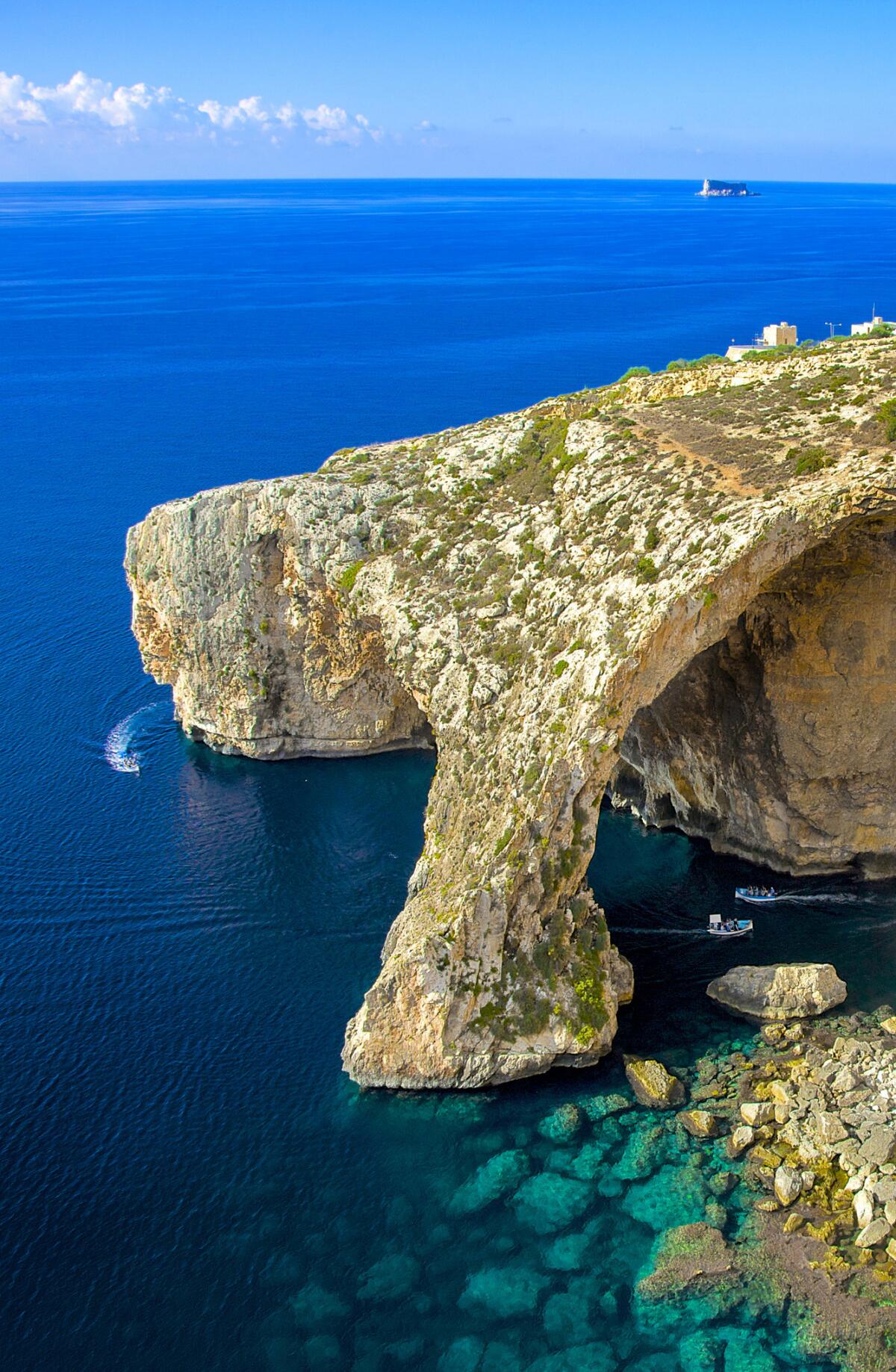
We parked on a cliff several hundred feet above the water (boat excursions leave from a nearby harbor) and quietly cataloged the various shades of blue —azure, cobalt, sky, powder, turquoise, aquamarine — below us.
The only mystery here was whether our photos would do it justice.
If you go
THE BEST WAY TO MALTA
From LAX, connecting service (change of planes) to Valletta is offered on Air France, Alitalia, British, Delta, Emirates, KLM, Norwegian, Swiss and Virgin Atlantic. Restricted round-trip fares begin at $632, including all taxes and fees.
TELEPHONES
To call the numbers below from the United States, dial 011 (the international calling code), 356 (the country code for Malta) and the local number.
WHERE TO STAY
Palazzo Paolina Boutique Hotel, 101 St. Paul St., Valletta; 2124-2442. Doubles from about $200 a night.
WHERE TO EAT
Nenu the Artisan Baker, 143 St. Dominic St., Valletta; 2258-1535. Opens at 11:45 a.m.; last order at 10:30 pm. Open Tuesdays-Sundays.
Palazzo Preca, 54 Strait St., Valletta, 21226777. Open for lunch noon-3 p.m. and dinner 6:30-10:30 p.m. Tuesdays-Saturdays and open for lunch noon-3 p.m. Sundays. Entrees from about $11.
TO LEARN MORE
We used Exclusively Malta tours, (800) 598-5474. Private tours start at $295 per person, per day; half-day tours $170 per person.
Sign up for The Wild
We’ll help you find the best places to hike, bike and run, as well as the perfect silent spots for meditation and yoga.
You may occasionally receive promotional content from the Los Angeles Times.
